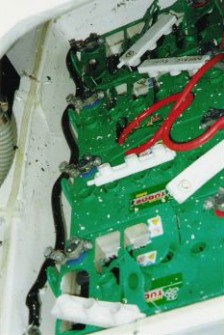
Each here sees Sea Start carrying out over 2000 breakdowns and 2018 has been no exception. As memberships rise, the frequency of calls for assistance rises.
However the reasons for the calls remain very similar from year to year and most are electrical faults. This can cover a whole multitude of things such as starter motors, alternators, fuses, engine management system, switches, corroded contacts and of course batteries.
It could be argued that batteries are the most important bit of kit on your boat, without which many things aren’t possible e.g., engine won’t start, no lights, and navigation becomes more challenging. New electronic diesel engines fitted in powerboats are now battery dependant, not only to start, but also to keep them running.
Here are a few bullet points on Lead Acid Batteries to help you:
- A fully charged battery should read around 12.65 volt when measured by a voltmeter. A flat battery will read 12.00 volts – 11.65 volts or less.
- When the batteries are being charged by a battery charger or engine alternator the voltage should read a voltage of between 13.5 volts and 14.5 volts
- Good voltage is not always a sign that batteries are in good order. You may have correct voltage but due to poor electrolyte or plate sulfation the power (amps) may be down
- To keep the battery healthy, check the electrolyte level is above the plates, and top up with distilled water only.
- Lead Acid batteries contain a mixture of sulphuric acid and distilled water so any spillage or splash can be very dangerous. Goggles are a must!
- When batteries are being charged they give off small amounts of hydrogen gas. However, if the alternator regulator fails and overcharges the battery, the discharge of hydrogen will be much greater. Hydrogen is highly flammable and potentially dangerous. The charging voltage should never go above 15 volts on a standard 12 volt system.
- Another cause of the battery overheating is an internal short within the battery which can occur when a battery runs dry and the positive and negative plates inside buckle and touch each other.
Gassing /overheating batteries
Signs:
- Smell of rotten eggs
- Loss of battery power
- High voltage on the engine voltmeter
Action:
- Avoid all flames
- Vent the compartment
- Do not disconnect the batteries at the terminals as this may cause a spark.
- Switch the batteries off at the isolator switch if necessary and it is away from the batteries
- Leave the batteries to cool down before removing
The life of a battery depends on many circumstances so we would recommend that Batteries are changed every 3-4 years and specific engine start batteries every 3 years.
There are 2 different types of battery:
DEEP CYCLE OR DOMESTIC
- For use when small loads are needed for a long time e.g. Navigation, lights, auto pilot, instruments etc
- Can be discharged to 50% without harming the battery
- Constructed of thick high density plates
HEAVY DUTY/STARTING BATTERIES
- Used when large loads are needed for short periods of time e.g. engine starting, windlasses and bow thrusters
- Any discharge to the battery must be restored quickly (recharged)
- Constructed of thin plates closely spaced to get maximum surface area

